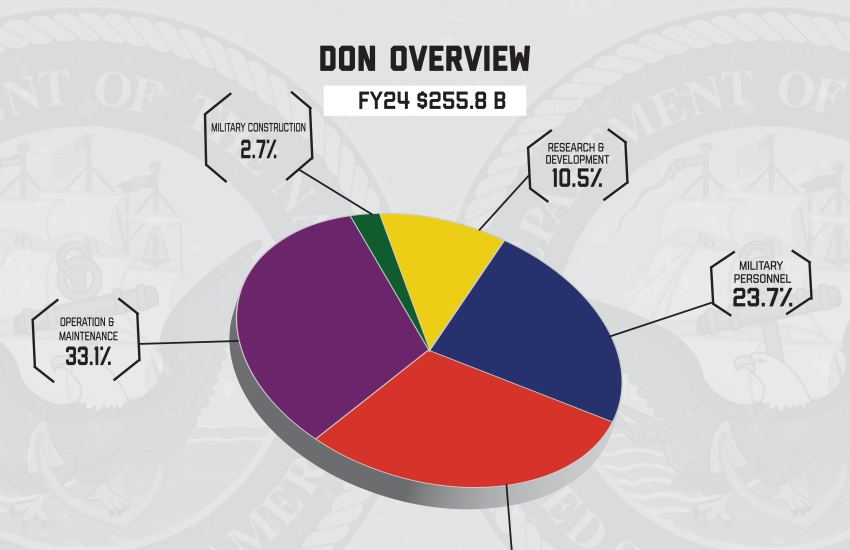Navy Budget Pivots To Asia
The Department of the Navy plans to spend $255.8 billion in fiscal year 2024, a 10% increase over the previous year’s $230.8 billion. This expansion follows an inflation peak and a 4.6% pay raise in January 2023. For the new fiscal year, a further 5.2% pay increase is expected, according to a Navy release.
The new budget will be spent:
- 33.1% in operation and maintenance
- 30.1% in procurement
- 23.7% in military personnel
- 10.5% in research and development
- 2.7% in military construction.
The department highlighted the purchases of one Columbia-class nuclear submarine, two Virginia-class submarines, four surface battle ships and seven support vessels.
Eleven hulls will be decommissioned, including two littoral combat ships or amphibs, as they are called in the service. These vessels will be retired before a decade in service. The Marine Corps’ requirement for these systems is set at 31, but no funding has been allocated to increase those figures in this budget. The Navy has 23 commissioned and building new ones is at a “strategic pause,” as Erik K. Raven, undersecretary of the Navy, said to journalists.
“What we are looking at is making sure that on the acquisition track, that again, that we’re looking at the right capabilities for amphibs and that we’re going to procure them in the right way and so we’re continuing to look at that,” Raven said.
A total of 35 F-35s will be added to the fleet for the Navy and Marine Corps, and between this budget and fiscal year 2028 purchases will reach 141 units, the Navy projects. In fiscal year 2024 a total of 88 aircraft will be added, including unmanned systems, for $17.3 billion.
The first unmanned surface vessel is expected in next year’s budget.
Hypersonic missiles are also included, as part of a joint development between the services.
The department has allocated $26.9 billion to research and development initiatives.

You'll see roughly a 50% growth investments for the Pacific deterrence initiative.
The White House presented the defense budget as one that “prioritizes China as America’s pacing challenge in line with the 2022 National Defense Strategy,” in a release.
This priority reallocates resources for the Department of the Navy.
“You'll see roughly a 50% growth investments for the Pacific deterrence initiative,” said Rear Adm. John Gumbleton, deputy assistant secretary of the Navy for budget. The flag officer explained that most of those resources are being invested in the expansion of the Navy and Marines presence in the Micronesian region of the Pacific.
“Those [funds] largely reside in our military construction request, as we continue to build out Camp Blaz, Guam,” Adm. Gumbleton said.






Comments